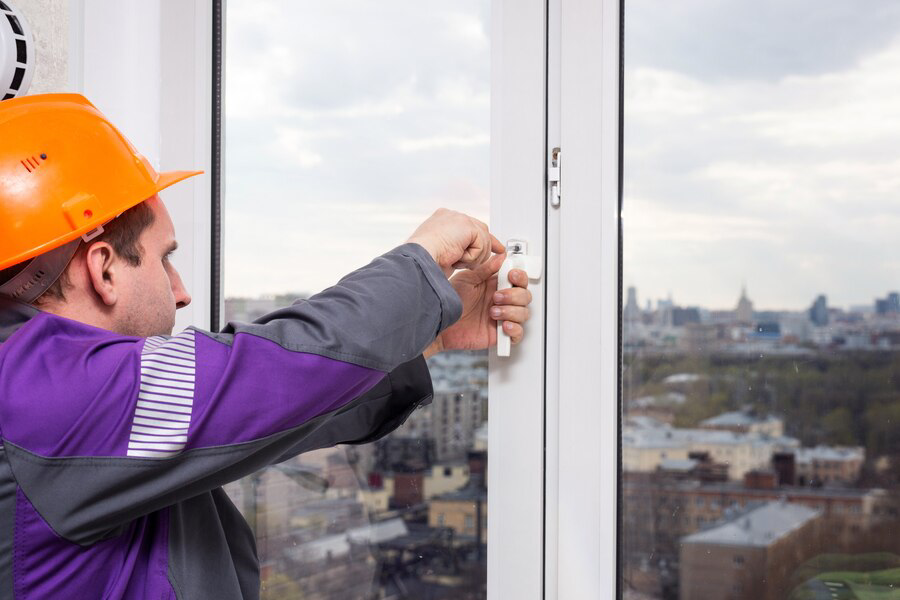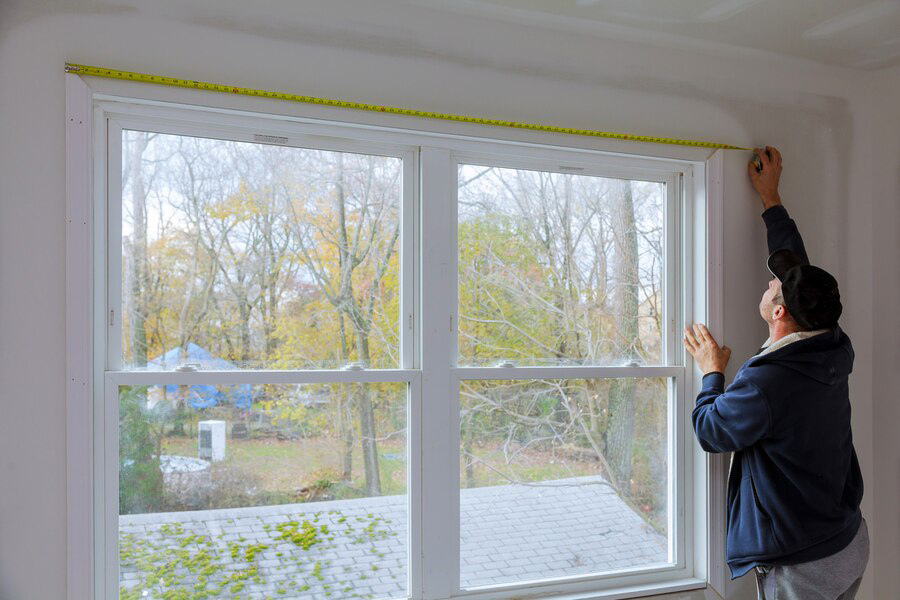
How to Finance Your Window Replacement Project
Are your windows showing signs of wear and tear, or perhaps you’re looking to upgrade to more energy-efficient options? Financing your window replacement project doesn’t need to be a daunting task. Whether you’re renovating your home for improved aesthetics or functionality, securing the right financial approach is crucial to ensuring a smooth and affordable process. Replacing windows can enhance your home’s curb appeal, increase energy efficiency, and even add value to your property. However, the costs involved can vary significantly based on factors such as materials, size, and installation requirements. By exploring various financing options—from personal savings and home equity loans to specialized window replacement loans—you can find a solution that fits your budget and timeline. Understanding these options allows you to make informed decisions, ensuring your window replacement project meets both your practical needs and aesthetic preferences. Join us as we delve into the world of financing options for your next window replacement endeavor.
Exploring Financing Options for Window Replacement
Replacing windows can significantly improve the energy efficiency, aesthetics, and overall value of your home. However, the costs involved can sometimes be substantial, depending on factors such as the number of windows, materials chosen, and labor costs. For many homeowners, financing options can make this investment more manageable and affordable. In this article, we’ll explore several financing options available for window replacement, helping you make an informed decision that suits your budget and financial situation.

Personal Loans
Personal loans are a common way to finance home improvement projects, including window replacements. These loans are typically unsecured, meaning they don’t require collateral such as your home. They offer fixed interest rates and terms, allowing you to budget effectively. Personal loans can be obtained from banks, credit unions, or online lenders. The approval process usually involves a credit check and income verification. Compare offers from different lenders to find the best terms and rates that fit your needs.
Home Equity Loans
A home equity loan allows you to borrow against the equity you have built in your home. This type of loan provides a lump sum of money that you repay over a fixed term, usually with a fixed interest rate. Home equity loans often have lower interest rates than personal loans because they are secured by your property. However, they require you to have significant equity in your home and involve closing costs and fees. It’s essential to consider the potential risks, such as the possibility of losing your home if you default on payments.
Home Equity Line of Credit (HELOC)
Similar to a home equity loan, a HELOC allows you to borrow against your home’s equity. However, instead of receiving a lump sum, you get access to a line of credit that you can draw from as needed. HELOCs typically have variable interest rates and flexible repayment terms. They can be a flexible option for financing window replacements, especially if you’re unsure of the total project cost upfront. Like home equity loans, HELOCs require sufficient equity in your home and come with closing costs and fees.
FHA Title I Property Improvement Loan
The Federal Housing Administration (FHA) offers Title I Property Improvement Loans specifically for home improvements, including window replacements. These loans are insured by the FHA, making them accessible to homeowners with lower credit scores or limited equity in their homes. They are available through approved lenders and can finance up to $25,000 for single-family homes. Interest rates may be higher than other financing options, so compare terms carefully before choosing this option.
Energy-Efficient Mortgage (EEM)
An Energy-Efficient Mortgage (EEM) is designed to finance energy-saving improvements, such as energy-efficient windows, when purchasing or refinancing a home. EEMs are offered through FHA and VA loan programs and allow borrowers to include the cost of energy-efficient upgrades in their mortgage without increasing the down payment. These loans can help offset the initial cost of high-efficiency windows by spreading payments over the loan term. Eligibility requirements and loan terms vary, so consult with lenders familiar with EEMs to explore this option.
Avoiding Common Financing Pitfalls in Window Replacement Projects
Financing a window replacement project is a significant investment in your home’s comfort, energy efficiency, and aesthetics. While there are various financing options available, navigating these choices can sometimes lead homeowners into pitfalls that affect their finances and project outcomes. In this article, we’ll discuss eight common financing pitfalls to watch out for when replacing windows, along with practical tips on how to avoid them. By understanding these pitfalls and taking proactive steps, you can ensure a smooth and financially sound window replacement experience.
Not Researching Financing Options Thoroughly
One of the most common mistakes homeowners make is not thoroughly researching their financing options. Rushing into a loan or financing agreement without comparing interest rates, terms, and fees from multiple lenders can result in higher costs over time. Take the time to explore different lenders, including banks, credit unions, online lenders, and window manufacturer financing programs. Look for competitive interest rates, favorable repayment terms, and any special offers that may reduce overall costs.
Ignoring Your Credit Score
Your credit score plays a crucial role in determining the interest rate and terms of any loan or financing you apply for. Ignoring your credit score or applying for financing without knowing where you stand can lead to higher interest rates or even loan rejection. Before applying for financing, check your credit report for accuracy and take steps to improve your score if needed. This may include paying down existing debt, correcting any errors on your credit report, and making payments on time.
Underestimating Total Project Costs
Another common pitfall is underestimating the total costs associated with a window replacement project. Beyond the cost of the windows themselves, consider factors such as installation, permits, disposal of old windows, and any unexpected repairs that may arise during installation. Create a detailed budget that includes all potential expenses to avoid financial strain or the need to borrow additional funds mid-project.
Opting for High-Interest Financing
Choosing financing with high-interest rates can significantly increase the overall cost of your window replacement project. While it may be tempting to opt for a quick and easy financing option, such as a credit card with a high APR, these choices can lead to long-term financial strain. Instead, prioritize loans with lower interest rates, such as home equity loans or personal loans, which offer more favorable terms and potentially lower monthly payments.
Overlooking Fine Print and Fees
Before signing any financing agreement, carefully review the fine print, including terms and conditions, fees, and any potential penalties for early repayment or late payments. Some loans may include origination fees, closing costs, or prepayment penalties that can add to the overall cost of financing. Be sure to ask your lender about any fees associated with the loan and factor them into your budgeting and decision-making process.
Steps to Qualify for Financing Your Window Replacement
Financing your window replacement project can make it more manageable and affordable. To qualify for financing, you’ll need to follow specific steps to ensure you meet lender requirements and secure the best terms possible. Here’s a streamlined guide to help you through the process.
- Check Your Credit Score: Start by reviewing your credit score. Lenders typically look for a good credit history to approve loans at favorable rates. Aim for a score that reflects responsible financial management.
- Assess Your Financial Situation: Evaluate your current income, debts, and expenses. Lenders consider your debt-to-income ratio to determine how much you can borrow. Ensure your finances are in order before applying.
- Gather Documentation: Prepare necessary documents such as proof of income, employment verification, and identification. Organizing these ahead of time can expedite the application process.
- Compare Financing Options: Research different lenders and financing options, including personal loans, home equity loans, or manufacturer financing. Compare interest rates, terms, fees, and eligibility criteria to find the best fit.
Conclusion
Financing your window replacement project is a critical step towards enhancing your home’s comfort, energy efficiency, and overall aesthetic appeal. By exploring various financing options such as personal loans, home equity lines of credit (HELOCs), or manufacturer financing programs, homeowners can find a solution that fits their budget and timeline. Whether you’re prioritizing energy savings, improving curb appeal, or addressing structural concerns, investing in new windows can provide significant long-term benefits.
At EZ Window Solutions of Akron, we understand the importance of making informed decisions about your home improvements. Our team is dedicated to helping Akron homeowners navigate the financing process seamlessly, offering expert guidance and competitive pricing. Contact us today at +1 (330) 368-2260 to schedule a consultation and discover how our customizable window solutions can transform your home. Let us simplify your window replacement journey and help you achieve the home of your dreams.


Write a Comment